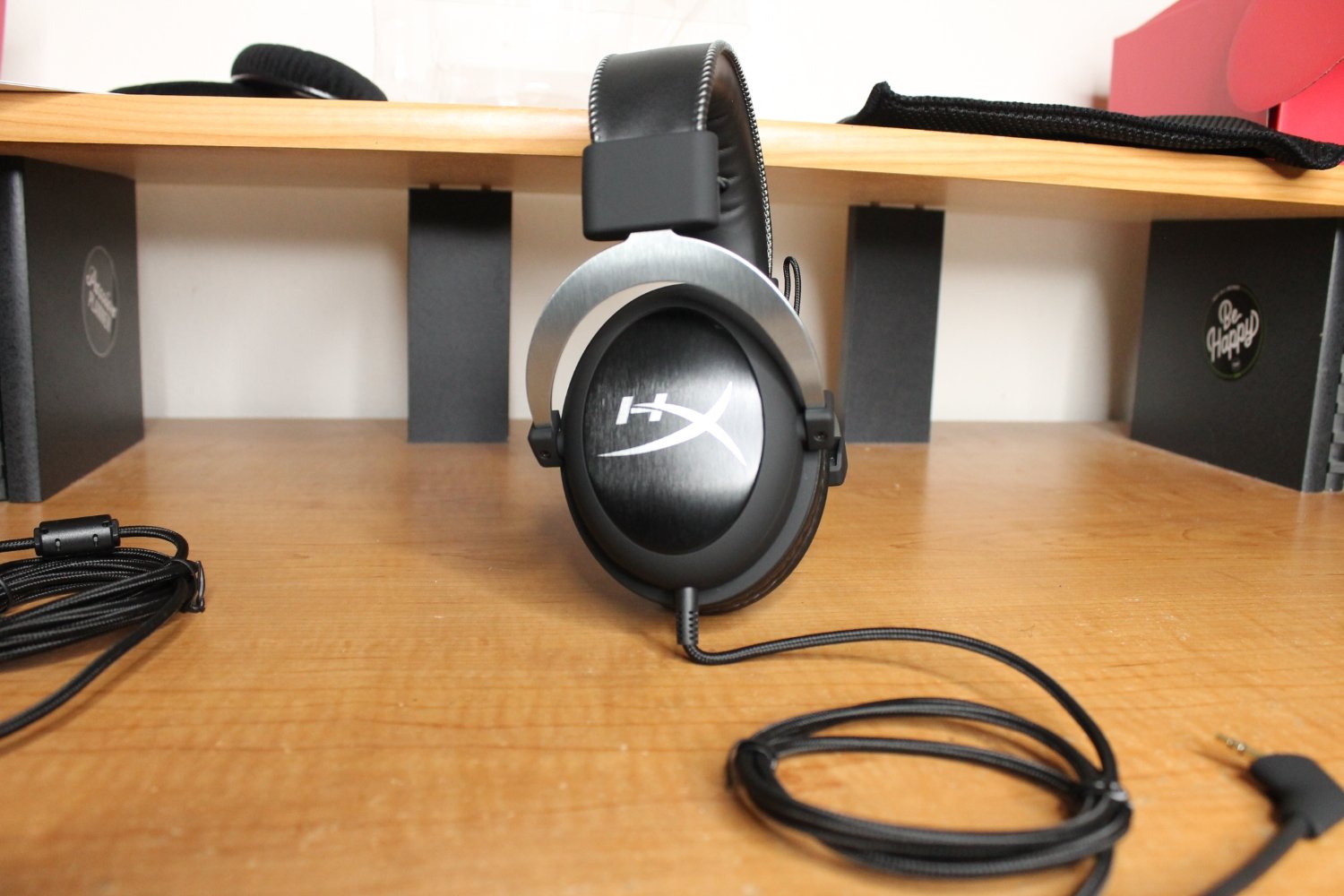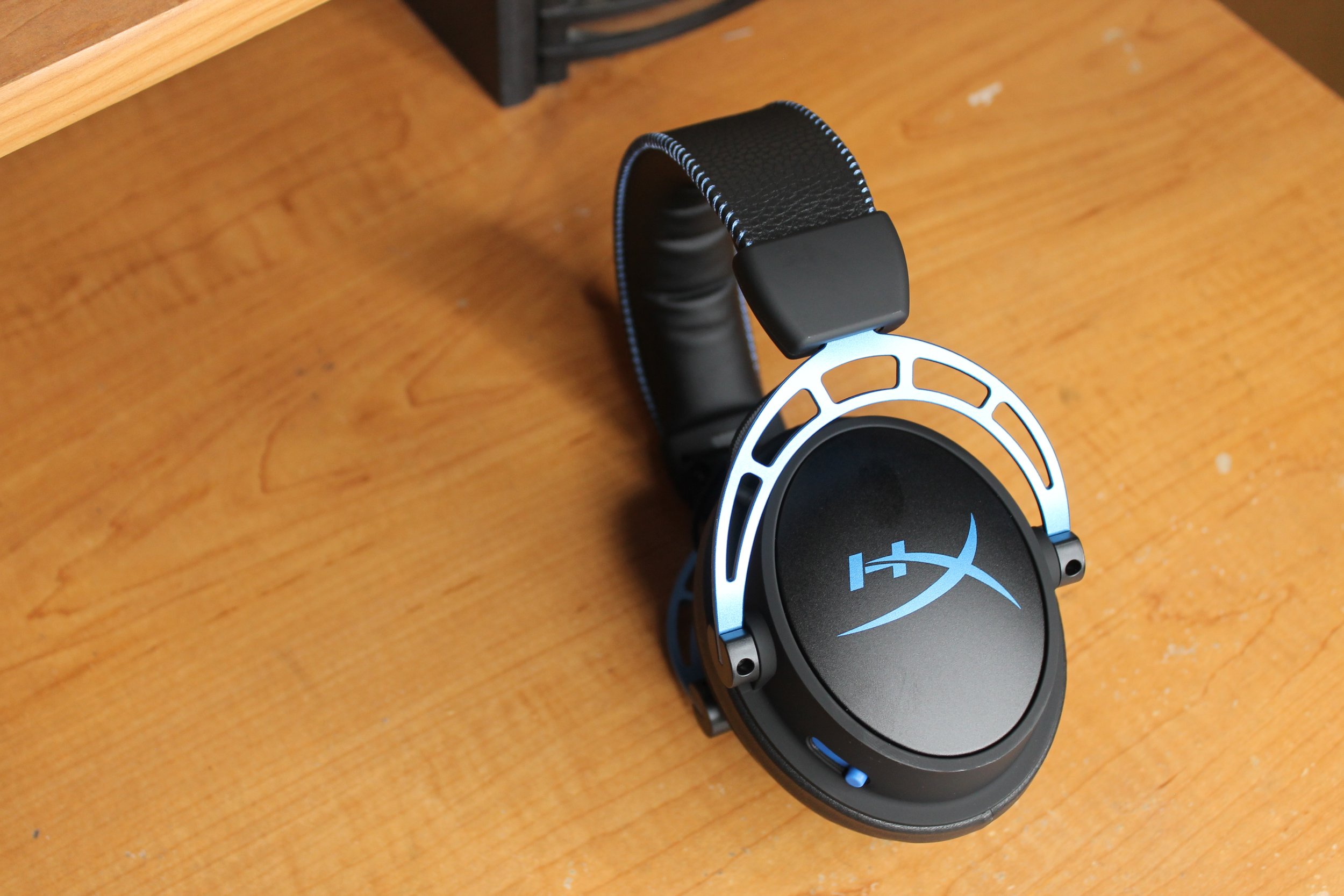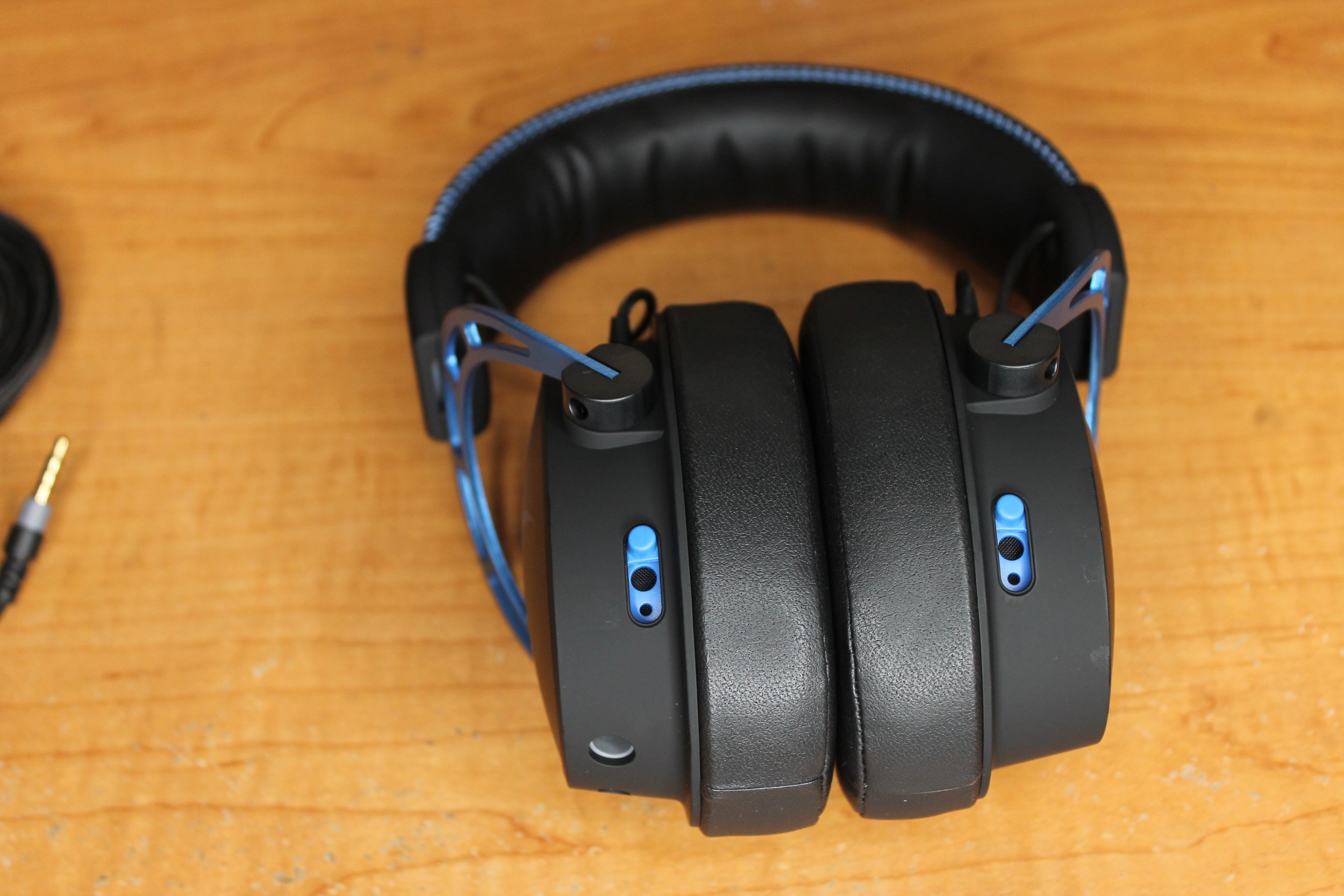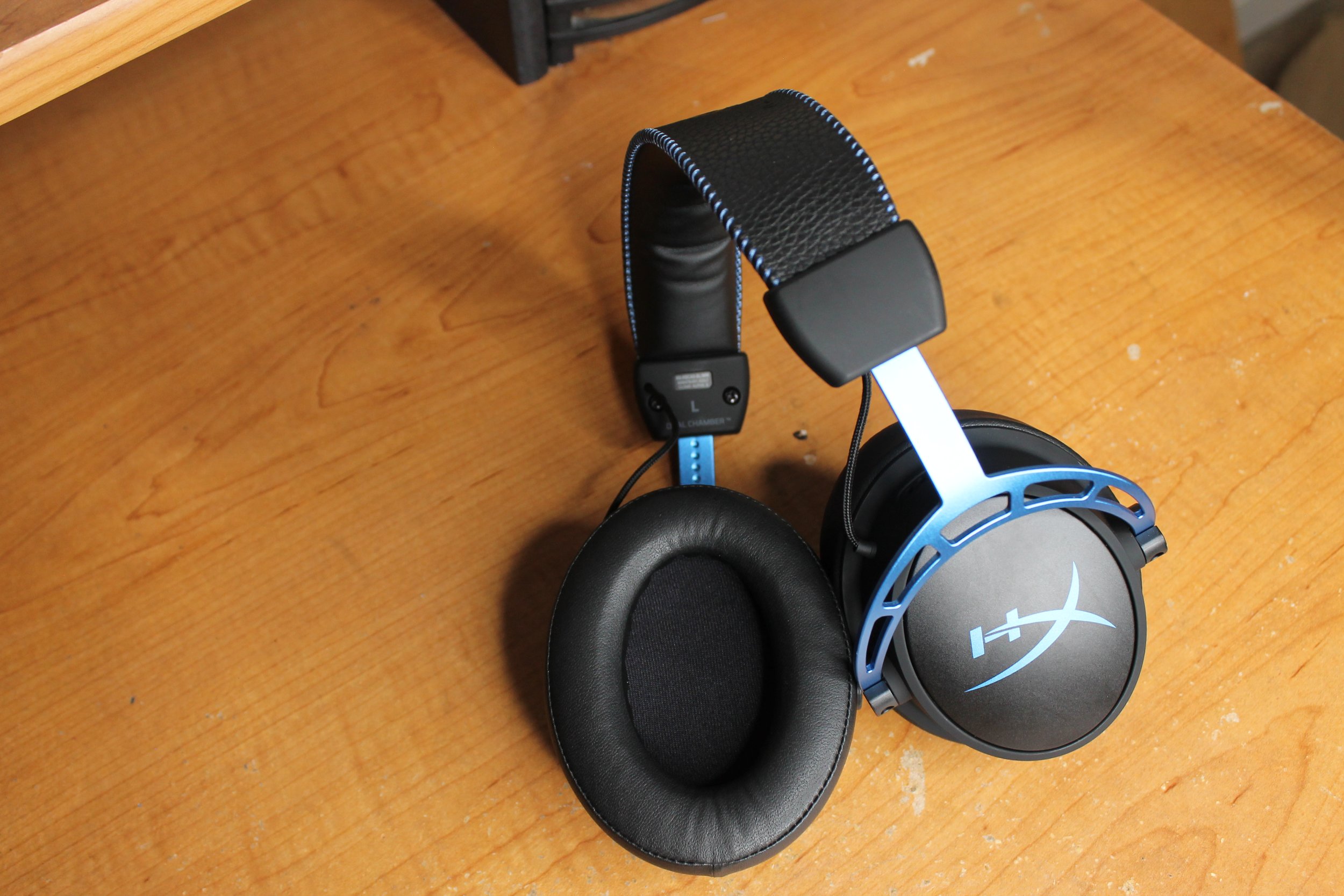Astro A40 TR with MixAmp vs HyperX Cloud II and Cloud Alpha S
Product links in this article are affiliate links. As an Amazon associate I earn from qualifying purchases.
Connectivity and Controls
Headphone Audio Quality
Microphone Audio Quality
Comfort and Build Quality
Verdict
Connectivity and Controls
Astro A40 TR with MixAmp Pro TR
The Astro A40 TR can be bought with or without the MixAmp Pro TR. I bought it with the PlayStation version of the MixAmp. With this version, the only control on the headset is the in-line cable with a mute switch. However, my mute switch did not work at all…
The rest of the controls are accessed through the MixAmp which is expectedly both a mixer and an audio amplifier. The knob on the left controls the overall headphone volume, and the right knob controls whether the game or voice volume is louder.
I’ve gone into more depth about the MixAmp in my dedicated review, but basically it makes your audio louder, enables the optional Dolby Audio, lets you cycle between EQ presets, and it connects to the Astro Command Center software.
The A40 headset itself has a detachable 3.5 mm cable and a detachable mic. The MixAmp connects to PlayStation or Xbox (make sure to pick the right version) via USB.
Full functionality is available out the box on PS4, but you’ll need an HDMI to optical adapter for PS5. Both versions work on PC. You plug the A40 (or any headset with a 3.5 mm jack plug) into it.
HyperX Cloud II
The HyperX Cloud II has a non-detachable 3.5 mm cable and also comes with a USB-A sound card. To get full functionality out of it on PS4 and PS5, you’ll need to update to the latest firmware. The mic itself is detachable.
The controls on the sound card include: 7.1 virtual surround sound, system volume, mic gain, and mic mute. No software is currently available for the Cloud II.
HyperX Cloud Alpha S
The HyperX Cloud Alpha S is a slight revision of the Cloud Alpha which itself is a slight revision of the Cloud II. The headset has bass adjustment sliders on the ear cups themselves. It’s more of a bass reduction slider, as you’ll never get a strong, booming low end from the Alpha S.
The 3.5 mm cable on the Alpha S is detachable and connects to the USB sound card. The mic is also detachable.
The controls on the USB sound card include a 7.1 virtual surround sound button, system volume, and game/chat mix. There is also a mic mute button on the side that can be used to activate mic monitoring by holding it down.
The Cloud Alpha S connects to the HyperX NGENUITY software which simply functions as an interface to view and control most of what you already can with the USB card.
Headphone Audio Quality
The mic on the A40 is actually from the Mod Kit.
The Astro A40 TR has a much better overall sound than both the Cloud II and Cloud Alpha S. That said, the Clouds have a sound signature more optimized for FPS performance out the box.
Frequency Response
The A40’s sound is much richer than the Clouds with powerful bass without sacrificing clarity in the mids and highs. It’s a relatively flat curve, whereas the Cloud II and Alpha S are very bright devices. Meaning they favor upper mids and treble.
The Cloud II has a spike around the 4 kHz range. The Cloud Alpha S has a bit more bass than the Cloud II and less of a peak in the upper mids. Both the Clouds have very little power in the bass, but have good detail in the higher frequencies.
Need for Speed Payback with the Cloud II.
For music, general use, and immersive games, the Astro A40 TR completely dominates, as no frequency completely overpowers the others. The sub-bass is exceptional by gaming headset standards.
Even if you prefer the sound signature of the Cloud II or Alpha S, they don’t have any EQ software for tweaking them for different uses. The MixAmp Pro TR has a customizable 5 band equalizer, so non-bass heads can make whatever customizations they desire.
FPS Performance
Call of Duty: Vanguard with the Astro A40 (with Mod Kit)
If your only goal with these headsets is to get the absolute best performance while playing FPS games, the story is a bit different. As an avid COD player, the most important frequencies to hear are the exact ones boosted by the Cloud II and (to a lesser extent) the Cloud Alpha S.
Footsteps are the most important auditory information followed perhaps by weapon fire and reloads. The immersive, deep vibrations of an explosion can take a back seat when the only goal is winning.
So if you’re going to be using the out the box sound for competitive shooters I would actually rank these: Cloud II, Cloud Alpha S, Astro A40 TR.
EQ Considerations
Astro Command Center advanced EQ options.
This is not to say the Astro A40 TR is bad for FPS games. Far from it. Rather, it’s just that a natural tone isn’t optimized to make the finest details in the upper frequencies stand out.
Creating a brighter preset in the Astro Command Center that exaggerates the highs solves this issue easily, but remember that will require getting the MixAmp.
Alternatively, free software like Equalizer APO can let you switch up the sound of all three of these devices provided you’re using them on PC.
Personally, I increase the 4 kHz range by 7 dB in the Astro Command Center. The overall sound is still full without getting harsh at loud volumes like the Clouds. But there’s still a ton of detail to tell where enemies are.
Headphone Audio Quality Summary
Black Ops - Cold War with the Alpha S.
Long story short:
The Astro A40 with the MixAmp Pro TR is the best of both worlds. It’s better than the Cloud II and Cloud Alpha S for music, movies, games, and general use out the box.
With EQ adjustments in the Astro Command Center, you can make the A40 a beast for FPS games as well and optimize it for any other genre you choose.
Microphone Audio Quality
The Astro A40 TR has the best and clearest mic out of these, but I would strongly suggest avoiding using anything beyond the “streaming” noise gate preset in the Astro Command Center if you do use that software. Those cut off vocals too much.
Comfort and Build Quality
The Astro A40 TR is made completely of plastic. The ear cushions, headband padding, mic, and speaker tags can be swapped out using the A40 TR Mod Kit.
Unfortunately, the adjustment frames are a lot less sturdy than they look. From a build quality perspective, this means the Cloud II and Cloud Alpha S get easy wins due to their aluminum frames.
In terms of comfort, I feel the Cloud II and A40 are tied, with the Alpha S coming in last. The A40 has very soft fabric for both the ear cushions and headband padding. The Cloud II and Alpha S have faux leather padding instead, but the Cloud II’s is softer.
Over long durations, the Alpha S’s clamping force becomes noticeable. And the same goes for the weight of the A40. I’ve gotten used to both, but the Cloud II should be incredibly comfortable even if your very first session with them lasts several hours.
In short, I find the A40 and Cloud II to be equal in comfort, but the Cloud II is lighter and has a more sturdy build. The Alpha S still has an excellent physical design, but it can get a bit uncomfortable after 4+ hours.
Verdict
I recommend the Astro A40 TR. The sound is rich and detailed, and the fit is snug and very comfortable. You don’t need the MixAmp to get great sound of out it, but it’s a convenient addition.
The Cloud II is for users who intend on using the headset for FPS games only. The unnatural EQ curve is great for that, and the padding is super soft.
The Cloud Alpha S is a better all-arounder than the Cloud II for music and general use due to having slightly better detailed sound and a less extreme EQ curve. However, the Astro A40 does what the Alpha S does even better.














